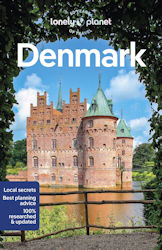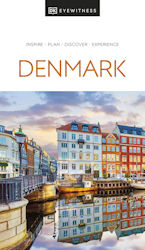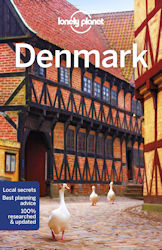Denmark is a small country located in Northern Europe, known for its stunning natural beauty, vibrant cities, and high quality of life. With a population of just over 5 million people, Denmark is one of the happiest countries in the world, consistently ranking at or near the top of the United Nations’ World Happiness Report. In this article, we will explore some of the many reasons why Denmark is such a special place.
One of Denmark’s most notable features is its landscape, which is largely characterized by rolling hills, pristine forests, and idyllic countryside. The country is home to many national parks and nature reserves, including the Wadden Sea National Park, a UNESCO World Heritage Site. Denmark’s coastline stretches for over 7,000 kilometres, and visitors can enjoy everything from sandy beaches to rugged cliffs.
Denmark’s cities are also a major draw for visitors. Copenhagen, the capital, is a vibrant and cosmopolitan city that combines historic architecture with modern design. The city is known for its many cultural attractions, including the Tivoli Gardens amusement park, the National Museum of Denmark, and the famous Little Mermaid statue. Other major cities in Denmark include Aarhus, Odense, and Aalborg, all of which have their own unique character and charm.
One of the things that set Denmark apart from other countries is its commitment to sustainability and environmentalism. Denmark is a leader in renewable energy, with wind power accounting for more than 40% of the country’s electricity production. The country also has one of the world’s highest rates of bicycle usage, with many people choosing to bike to work, school, and other destinations. Denmark strongly focuses on reducing waste and promoting recycling, and the country has set ambitious goals for reducing greenhouse gas emissions in the coming years.
Denmark is also a country with a rich cultural heritage. The Danish people are proud of their history, and many traditions and customs are still celebrated today. Danish cuisine is characterized by hearty, flavorful dishes made with fresh, locally sourced ingredients. Smørrebrød, an open-faced sandwich made with rye bread and various toppings, is a staple of Danish cuisine. The country is also known for its beer, with many microbreweries producing unique and delicious beers.
Denmark is consistently ranked among the best in the world in terms of education and healthcare. The country has a comprehensive public healthcare system that provides universal coverage to all citizens, and the education system is highly regarded, with free primary and secondary education, as well as many opportunities for higher education.
Overall, Denmark is a country with a lot to offer. Whether you’re interested in exploring the great outdoors, experiencing vibrant cities, or learning about a rich cultural heritage, Denmark has something for everyone. With its commitment to sustainability, focus on the quality of life, and friendly and welcoming people, it’s no wonder that Denmark is consistently ranked among the happiest countries in the world.
Best Time to Visit Denmark
The best time to visit Denmark depends on what you’re looking for and what you want to experience during your trip. Denmark has a temperate maritime climate, with mild summers and cold winters. Here are some things to consider when planning your visit:
Summer (June-August): This is the peak tourist season in Denmark, with long days and mild temperatures, making it an excellent time to explore the countryside and coastline. Summer is also a great time to experience the many festivals and outdoor events that take place across the country, including the Roskilde Festival, Aarhus Festival, and the Copenhagen Jazz Festival.
Fall (September-November): Fall is a great time to visit Denmark if you want to avoid the crowds of summer and experience the changing colours of the countryside. Temperatures are cooler but still comfortable, and the fall harvest is a great time to sample seasonal Danish cuisine and locally-produced wine and beer.
Winter (December-February): Winter can be a magical time to visit Denmark, especially if you’re interested in traditional holiday celebrations. The Christmas markets in Copenhagen and other cities are a must-see, and the Danish concept of “hygge” (cosiness) is in full swing during the winter months. Keep in mind that daylight hours are shorter and temperatures can be quite cold, but there are plenty of indoor activities to enjoy, such as museums, galleries, and restaurants.
Spring (March-May): Spring is a great time to visit Denmark if you want to experience the country as it comes back to life after winter. Temperatures start to rise, and the countryside bursts into bloom with colourful flowers and budding trees. Spring is also a great time to visit Denmark’s many gardens and parks, including the famous Tivoli Gardens in Copenhagen.
Overall, Denmark is a great destination to visit year-round, but the best time to go depends on what you want to experience and what activities you’re interested in.
Average Temperature in Denmark
The average temperature in Denmark depends on the time of year and the region of the country. Denmark has a temperate maritime climate, which means that temperatures are generally mild with no extreme heat or cold. Here is a breakdown of the average temperatures in Denmark by season:
Spring (March-May): The average temperature in Denmark during spring is around 5-15°C (41-59°F).
Summer (June – August): The average temperature in Denmark during summer is around 15-25°C (59-77°F), with occasional heat waves bringing temperatures above 30°C (86°F).
Fall (September – November): The average temperature in Denmark during fall is around 5-15°C (41-59°F), with temperatures gradually cooling down as the season progresses.
Winter (December – February): The average temperature in Denmark during winter is around 0-5°C (32-41°F), with occasional cold snaps bringing temperatures below freezing.
It’s worth noting that Denmark’s weather can be unpredictable, and rain is common throughout the year. It’s always a good idea to check the weather forecast before travelling to Denmark and to pack layers and waterproof clothing to prepare for any conditions.
Credits
Photo: Nyhavn, København, Denmark. Photo by: Nick Karvounis on Unsplash






